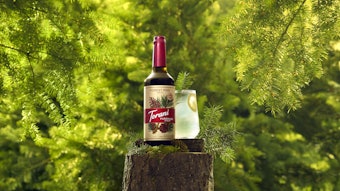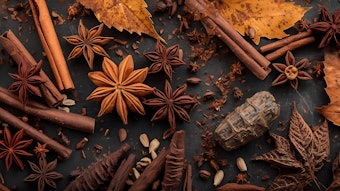
In his March 2011 column, John Wright considered the ways in which perfumers and flavorists could leverage their similarities and differences to formulate in new and novel ways. The conversation soon moved online to the LinkedIn community hosted by Perfumer & Flavorist magazine (group name: Perfumer & Flavorist (P&F) Magazine). Here we share some insights from readers around the globe.
“I remember the saying, ‘Everybody wants to be somebody else,’” says flavorist consultant Mohammad Aslam, acknowledging the sometimes envious, sometimes disconnected relationship shared by perfumers and flavorists.
“I believe that the biggest thing [flavorists and perfumers] can share with each other is inspiration,” added Hamish Taylor, vice president of global strategic business development at Symrise. “This can be in terms of interpreting trends and ideas, novel use of materials or sharing exciting ‘collisions’ of materials that create interesting taste or scent dynamics. Exchanging ideas and insights occurs in the best of companies some of the time and perhaps sometimes we all forget how to benefit from each other—it starts with a creative conversation.”
Taylor provides an example of how flavor knowledge can aid perfumery groups: “A company may be sitting on a veritable gold mine of excellence in citrus and vanilla flavor materials that their perfumery colleagues are not exposed to or do not understand how to use. The nuances of naturalness—of course subject to any regulatory and/or performance constraints—can be played out as subtle accents in the finest of fine fragrances or the most functional of functional notes.”
Perfumer Penny Williams says, “As a perfumer fortunate enough to have worked with flavorists on several occasions, I can certainly recommend the experience. For me, the flavorists’ insight in using high-impact aroma chemicals was very interesting across all areas. I felt that flavorists were further along in their understanding of using key components for authenticity and I was keen to try and catch them up in this.”
Greg Bennett, executive vice president at Amerasian Fragrance Research Ltd., adds, “Flavorists tend to use ingredients quite differently from most perfumers. As a perfumer I am quite heavy-handed with certain components, especially making fragrances for household products, and tend to consider component strength, stability and evaporation rate above odor character. Flavorists routinely use components at lower levels and traces of acids … [T]he trace materials don’t seem to promote much odor when considered separately, but as a whole such formulations can create tremendously complex mixtures, which are very odorous and capture a naturally evolving fragrance spectacularly. Put another way, applying flavorist’s techniques to your fragrances might be like seeing a movie in 3-D instead of 2-D: It could make you feel sick to your stomach at first, but the experience is worth it.”
“I think perfumers and flavorists have a different angle on olfaction,” says flavor chemist and food safety consultant Dave Baines. “Perfumers are interested in the orthonasal route and flavorists more in the retronasal route to the olfactory epithelium. I think there are learning points here. I find it strange that the orthonasal route can invoke memory and heighten emotion but the retronasal route from the back of the throat doesn’t seem to do this but is impacting on the same olfactory receptors—or are they? Do we know? Would flavorists be interested in creating flavors which when added to foods affected emotions/memory, etc.?”
Williams pursues this concept further, noting, “When we eat … there’s also texture, temperature and the sound of the food being eaten. There’s a lot more going on when we eat and drink, and we have better language (confidence and experience) to describe these things, therefore more conscious reference points. I think this more conscious level of processing taste information masks the memory and emotional links that might otherwise be more obvious.”
Baines concludes, “Eating is a complex experience in which multimodal effects converge and, yes, that may mask the response from the amygdala—the emotional seat of the brain.”
At the bench, meanwhile, an exchange of creative insights can have practical effects. “As a perfumer I always take ideas from flavorists for fruity accords and gourmand notes for my new creations, like cappuccino and gin & tonic,” says Ivan Alemany, senior perfumer and fragrance R&D manager at Delta Aromatic. Aslam concurs: “My perfumer friends always ask for fruity notes.”
“The perfumer’s creation of an amazing ‘strawberry fantasy’ [scent] could provide the flavorist with inspiration and insights into creating … the next beverage trend-setting innovation,” says Taylor.
Williams concludes, “I’ve been called upon to share understanding of floral accords and longevity with flavorists. Perfumers and flavorists share much of a common language and goal, and to discuss odors and tastes together makes for a fascinating conversation. Even if, due to technical or regulatory restrictions, we cannot use exactly the material the other would choose, it often sparks a different and creative approach. We’ve more in common than one might think.”










